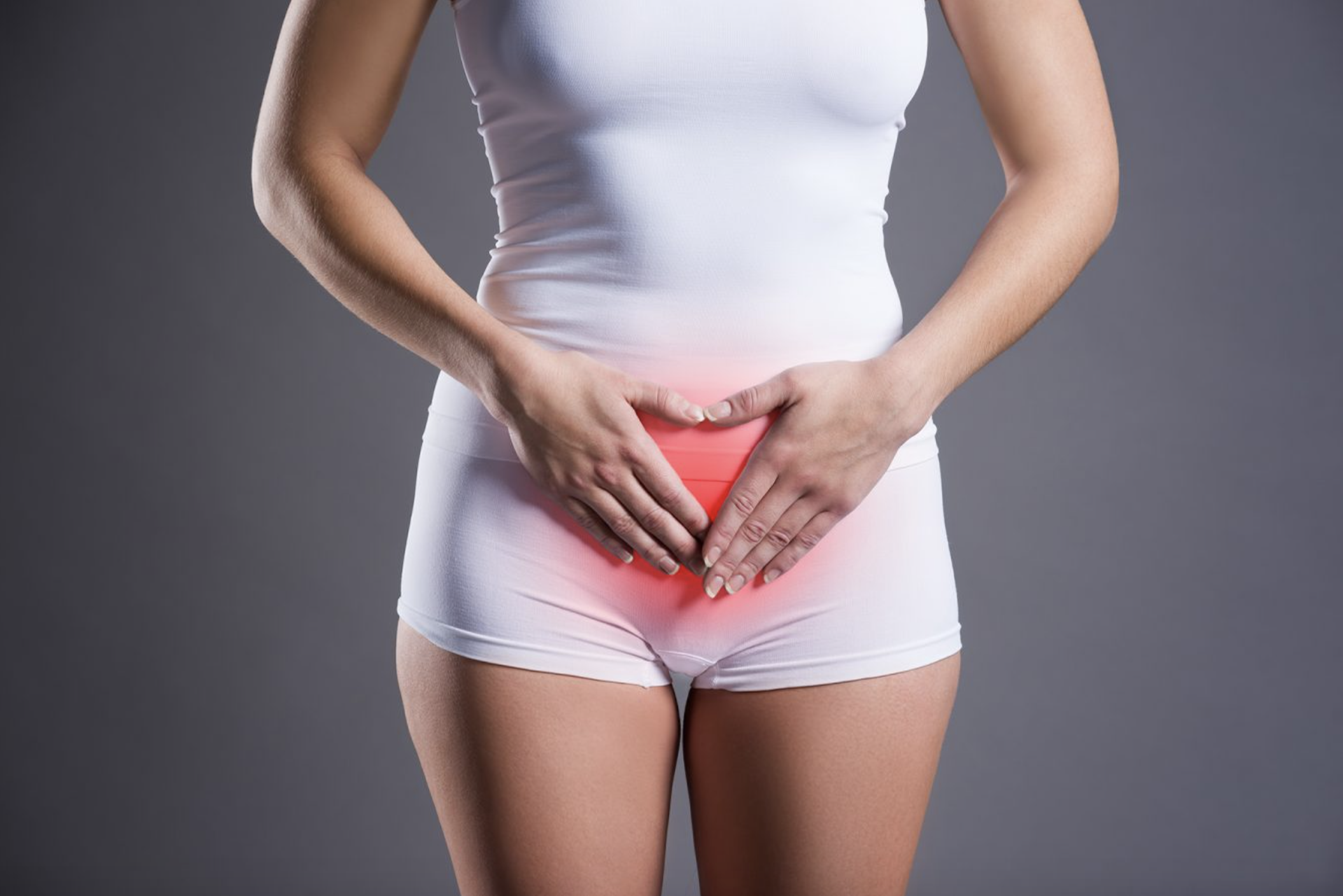
Pelvic and Genital Pain
Pelvic and genital pain describes discomfort in the areas of your body including the lower abdomen, pelvis, and the vulvar area (where the genitals are located).
Symptoms/Functional Problems
People describe this pelvic pain in many different ways including pain in their hip, tail bone, buttock, pubic bone, SI, and/or the abdominal area. It may be difficult to pinpoint exactly where. Pain description may include aching, constant, severe, cramping, or pressure. (1) People may describe heaviness in their pelvis or tenderness in their abdomen, back, or butt. Functionally, people with pelvic pain have difficulty with daily activities including sitting down for extended periods of time, dyspareunia (pain with intercourse), urinary incontinence or urgency, constipation, discomfort with bowel movements, limited range of motion in hips, and more.
Causes
Pelvic pain can be caused by a variety of different conditions. Women who have experienced pregnancy and childbirth may report pelvic pain due to the effects of carrying and birthing a baby. Other causes may be pelvic floor dysfunction that involves weakness and/or muscle imbalance, residual scar tissue from a surgery, prolapse, and/or joint issues and muscle imbalances from other conditions unrelated to pregnancy and childbirth. (2) You can see that many people may experience this type of pain due to the wide variety of causes.
FAQ
Q: Is pelvic and/or genital pain common?
A: Yes! At this time, pelvic pain is still underreported, however awareness is growing for the prevalence of this type of pain and how pelvic floor physical therapy can help as part of a multi-disciplinary approach. One study emphasizes, “It is imperative that pelvic floor muscle over-activity, underactivity, or a combination thereof is accurately assessed and treated to avoid exacerbation of symptoms.” (3)
Q: I have had pain in my pelvis for many years. Is it too late to seek treatment?
A: No. It is important to seek treatment to identify the cause of your chronic pelvic pain. Pelvic floor physical therapy should be included in your treatment approach to improve your symptoms as it has been found to be helpful. (4) Ask your doctor for a referral, and come see us for an evaluation!
Q: I am pregnant. Is it normal to feel pressure or pain in my pelvis?
A: It is common, but it is treatable also. One study reports that “more than two-thirds of pregnant women experience low-back pain and almost one-fifth experience pelvic pain.” (5)
Q: My doctor says it is normal to experience heaviness in my pelvis since I have had a baby. Can pelvic floor therapy help me?
A: Yes! You may have pelvic floor dysfunction from carrying and birthing your baby, regardless if you had your baby vaginally or via cesarean. Pelvic floor physical therapy can help improve your symptoms, provide education on how your body has changed and how to heal it safely. (6)
Q: Would I benefit from pelvic floor physical therapy (PFPT)?
A: If you are a woman and experiencing any of the symptoms described here, you may benefit from PFPT. This specialized therapy is useful in treating many painful and uncomfortable conditions related to pelvic and genital pain, regardless of how long you have been having symptoms. Come see us for an evaluation!
Treating and Managing Your Pelvic & Genital Pain
Pelvic and genital pain is underreported despite the huge impact it can have on a person’s comfort and quality of life. Up to 20% of our population may experience pelvic pain, including both men and women. (7) A pelvic floor physical therapist is an expert in this field and specially trained to evaluate and treat your symptoms. Depending on the source of your pain, a pelvic floor physical therapist may teach you how to engage in your daily activities with appropriate muscle activation, instruct you on exercises to strengthen and improve muscle weakness and imbalance, and help you identify how to use your deep abdominals, diaphragm and pelvic floor muscles to improve symptoms and prevent development of new and worsening symptoms in the future. Implementation of physical therapy to treat pelvic pain is an important part of recovery. (8)
At N-Balance Physical Therapy, we offer a comprehensive treatment plan that includes a thorough evaluation to identify the cause of the problems you are experiencing and implement an individualized treatment plan to improve your symptoms, quality of life and enjoyment of your new baby.
References
- Mayo Foundation for Medical Education and Research. (2019, May 14). Chronic pelvic pain in women. Mayo Clinic. https://www.mayoclinic.org/diseases-conditions/chronic-pelvic-pain/symptoms-causes/syc-20354368.
- Physical Therapy Guide to Pelvic Pain. American Physical Therapy Association. (2020, June 16). https://www.choosept.com/symptomsconditionsdetail/physical-therapy-guide-to-pelvic-pain.
- Bradley, M. H., Rawlins, A., & Brinker, C. A. (2017). Physical Therapy Treatment of Pelvic Pain. Physical medicine and rehabilitation clinics of North America, 28(3), 589–601. https://doi.org/10.1016/j.pmr.2017.03.009
- Speer, L. M., Mushkbar, S., & Erbele, T. (2016). Chronic Pelvic Pain in Women. American family physician, 93(5), 380–387.
- Liddle, S. D., & Pennick, V. (2015). Interventions for preventing and treating low-back and pelvic pain during pregnancy. The Cochrane database of systematic reviews, 2015(9), CD001139. https://doi.org/10.1002/14651858.CD001139.pub4
- Lawson, S., & Sacks, A. (2018). Pelvic Floor Physical Therapy and Women’s Health Promotion. Journal of midwifery & women’s health, 63(4), 410–417. https://doi.org/10.1111/jmwh.12736
- See note 2 above
- Rosenbaum, T. Y., & Owens, A. (2008). The role of pelvic floor physical therapy in the treatment of pelvic and genital pain-related sexual dysfunction (CME). The journal of sexual medicine, 5(3), 513–525. https://doi.org/10.1111/j.1743-6109.2007.00761.x